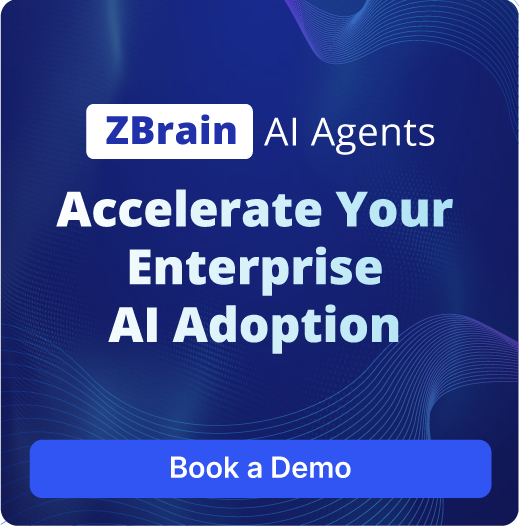Tailored for speed and clarity, the agent produces a standardized summary that becomes a shared reference point across functions. Product managers can articulate intent, engineers can scope more confidently, and QA teams can plan early test strategies—each using the same foundational brief. This lightweight structure improves transparency and reduces friction during handoffs.
By embedding alignment at the point of feature conception, the Feature Release Outline Agent accelerates planning cycles, supports better cross-team coordination, and improves readiness for execution. It enhances strategic clarity while allowing teams to iterate rapidly and collaboratively.
Accuracy
TBD
Speed
TBD
Input Data Set
Sample of data set required for Feature Release Outline Agent:
Subject: UX Improvement Request: Sticky Headers for Large Data Tables
From: Laura Kim laura.kim@acmecorp.com (Director, Strategic Accounts)
To: Alex Nguyen alex.nguyen@acmecorp.com (Product Manager, Core UI/UX),Emily Davies emily.davies@acmecorp.com (Product Director, Platform Features)
Cc: Mark Thompson mark.thompson@acmecorp.com (VP, Enterprise Sales),Emily White emily.white@acmecorp.com (Head of Customer Success)
Date: 2025-05-21
Team,
I'm writing to relay a critical piece of feedback we've received consistently from our top-tier enterprise clients, particularly from their analysts and operations teams who spend hours daily in our platform's reporting and analytics modules. This directly impacts their efficiency and overall satisfaction.
The biggest pain point is the behavior of large data tables. When users scroll down through hundreds or thousands of rows, the column headers disappear from view. This forces them to constantly scroll back up to confirm which column they are looking at, significantly slowing down their data analysis and leading to considerable frustration. Clients like "Global FinServ" and "Apex Bank" have specifically highlighted this as a major UX gap.
Adding a "sticky" or "fixed" header functionality to our data tables, where the column titles remain visible at the top of the viewport as the user scrolls, would be a huge quality-of-life improvement. This seems like a relatively contained UI/UX enhancement on the frontend, but the impact on power user efficiency and overall client experience would be immense.
Could we please prioritize this for immediate implementation, perhaps behind a feature flag for a controlled rollout to a pilot group of our strategic accounts? This is a recurring ask that's affecting adoption in critical workflows.
Thanks,
Laura Kim
Director, Strategic Accounts | ACME Corp
Deliverable Example
Sample output delivered by the Feature Release Outline Agent:
Feature Release Outline: "Sticky" Column Headers for Data Tables
Feature Flag Name:
ui_sticky_table_headers_v1Owner:
- Product: Alex Nguyen (Product Manager, Core UI/UX)
- Engineering Lead (Proposed): Jessica Kim (Senior Frontend Engineer)
Status:
- Outline Generated: 2025-05-21
- Planning Phase: Definition & Design
1. Core Overview
This feature enhances the usability of large data tables across our platform by making column headers "sticky." As users scroll down through extensive datasets, the column headers will remain fixed at the top of the visible screen area. This prevents users from losing context and needing to scroll back up to identify data columns, directly addressing a key user experience pain point for enterprise clients.
2. Value Proposition
For Enterprise Users (Analysts, Ops Teams):
- Improved Efficiency: Quicker and more intuitive data analysis without constant scrolling.
- Reduced Frustration: Eliminates a common annoyance when navigating large datasets.
- Better Context: Always know what data you're looking at, regardless of scroll position.
For Business:
- Enhanced User Experience: Delivers a tangible quality-of-life improvement requested by power users, boosting satisfaction.
- Competitive Parity: Aligns with modern UX standards common in enterprise applications.
- Low Risk, High Impact: A relatively contained UI change with significant user benefit.
- Phased Rollout: The feature flag allows us to roll this out to specific user groups or modules first.
3. High-Level User Flow
- User Views Data Table: A user navigates to any large data table within the application (e.g., in the Analytics Dashboard, Report Viewer, or Transaction History).
- User Scrolls Down: As the user scrolls vertically through the table content.
- Headers Remain Visible: The table's column headers (e.g., "Transaction ID," "Amount," "Status") will automatically stick to the top of the browser viewport, remaining visible even as the rows below scroll out of view.
- User Continues Analysis: The user can continue to scroll and analyze data without losing header context.
4. Key Expected Outcomes
- Increase reported user satisfaction with data table interaction (e.g., through surveys or direct feedback).
- Reduce time spent navigating large tables (qualitative assessment).
- Successful deployment to target users via feature flag without impacting other UI elements.

Project Status Email Agent
Generates clear and professional status update emails using comprehensive project data and team-specific progress inputs.

Secure Doc Assistance Agent
Quickly get answers, summaries, and insights from your PDFs with the help of the Secure Doc Assistant Agent.

Email Triage Agent
Automatically organizes your Gmail inbox by priority and action type, making email management faster, smarter, and stress-free.

Instructional Guide Drafting Agent
Automatically generates detailed, user-adapted instructional guides, including step-by-step tutorials, troubleshooting advice, and contextual tooltips.

Feedback to Tutorial Generation Agent
customer feedback or queries into comprehensive, solution-oriented tutorials to improve customer self-service and reduce support load.

Feature Release Outline Agent
Generates a simple outline for each feature flag, covering the overview, value proposition, and basic user flow.
